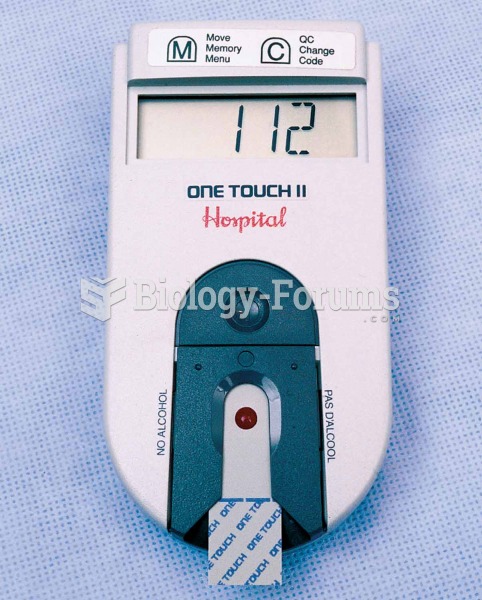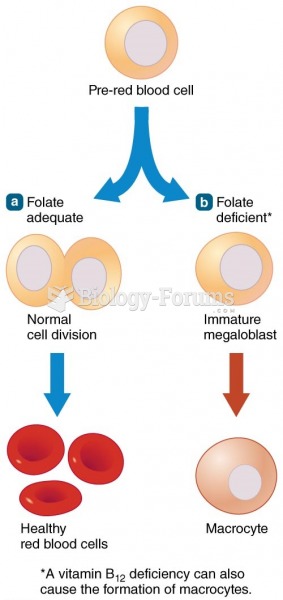|
|
|
The B-complex vitamins and vitamin C are not stored in the body and must be replaced each day.
The term bacteria was devised in the 19th century by German biologist Ferdinand Cohn. He based it on the Greek word "bakterion" meaning a small rod or staff. Cohn is considered to be the father of modern bacteriology.
ACTH levels are normally highest in the early morning (between 6 and 8 A.M.) and lowest in the evening (between 6 and 11 P.M.). Therefore, a doctor who suspects abnormal levels looks for low ACTH in the morning and high ACTH in the evening.
More than 34,000 trademarked medication names and more than 10,000 generic medication names are in use in the United States.
Women are 50% to 75% more likely than men to experience an adverse drug reaction.







